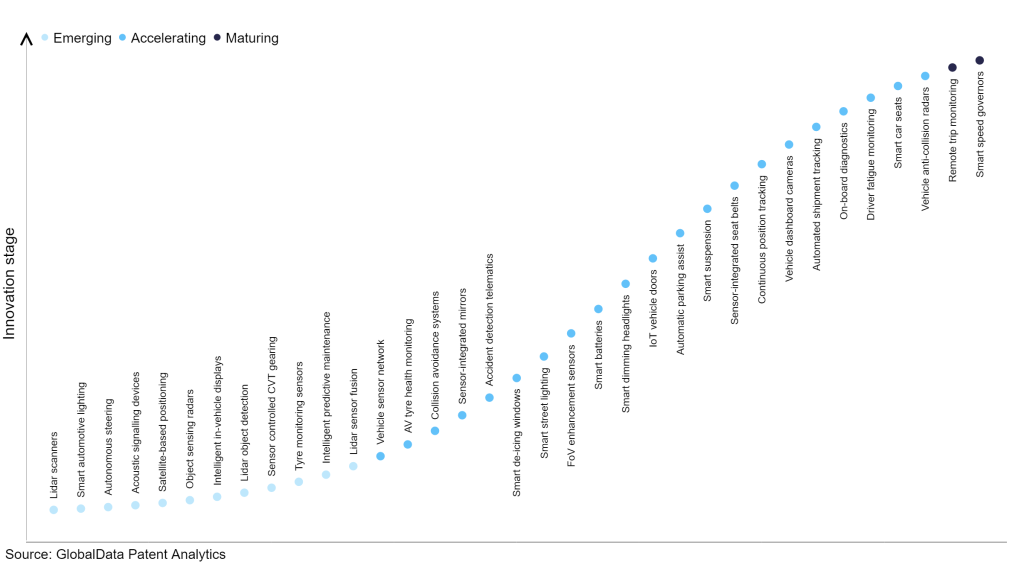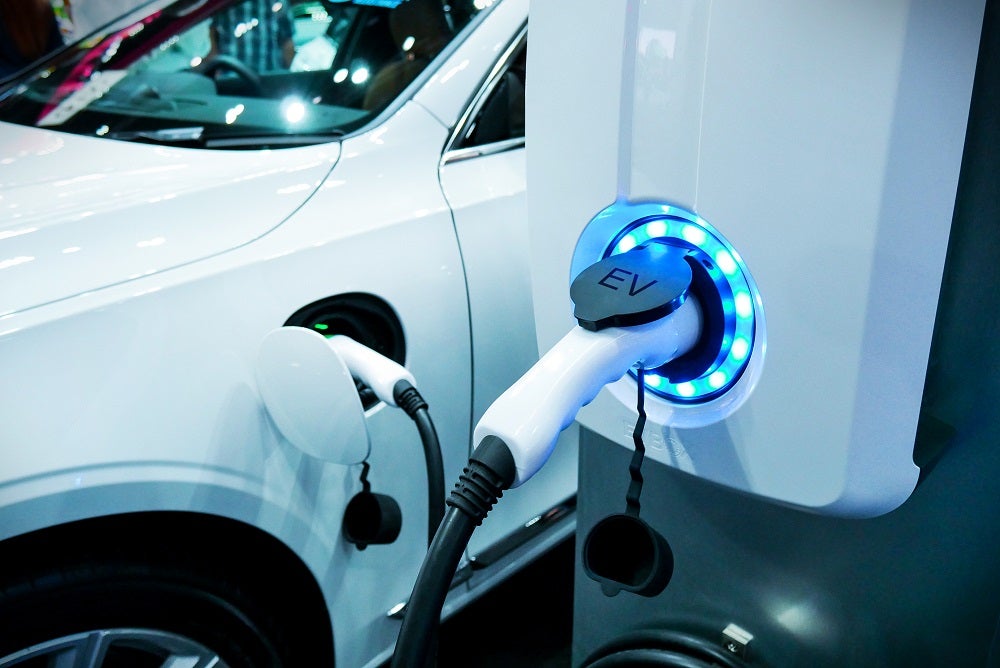The automotive industry continues to be a hotbed of patent innovation. Activity is driven by connected vehicles, autonomous vehicles and need for enhanced safety, and growing importance of technologies such as pulse sensors and temperature sensors. In the last three years alone, there have been over 1.7 million patents filed and granted in the automotive industry, according to GlobalData’s report on Internet of Things in automotive: sensor-integrated mirrors. Buy the report here.
However, not all innovations are equal and nor do they follow a constant upward trend. Instead, their evolution takes the form of an S-shaped curve that reflects their typical lifecycle from early emergence to accelerating adoption, before finally stabilizing and reaching maturity.
See Also:
Identifying where a particular innovation is on this journey, especially those that are in the emerging and accelerating stages, is essential for understanding their current level of adoption and the likely future trajectory and impact they will have.
300+ innovations will shape the automotive industry
According to GlobalData’s Technology Foresights, which plots the S-curve for the automotive industry using innovation intensity models built on over one million patents, there are 300+ innovation areas that will shape the future of the industry.
Within the emerging innovation stage, LiDAR scanners, smart automotive lighting, and autonomous steering are disruptive technologies that are in the early stages of application and should be tracked closely. Vehicle sensor network, AV tyre health monitoring, and collision avoidance systems are some of the accelerating innovation areas, where adoption has been steadily increasing. Among maturing innovation areas are remote trip monitoring and smart speed governors, which are now well established in the industry.
Innovation S-curve for Internet of Things in the automotive industry

Sensor-integrated mirrors is a key innovation area in Internet of Things
An infrared sensor provides a homogeneous reflection of an image without shadows or brightness. These sensors are included in smart mirrors in vehicles to give a reflection-free, light-adjusted view of the rear side.
GlobalData’s analysis also uncovers the companies at the forefront of each innovation area and assesses the potential reach and impact of their patenting activity across different applications and geographies. According to GlobalData, there are 30+ companies, spanning technology vendors, established automotive companies, and up-and-coming start-ups engaged in the development and application of sensor-integrated mirrors.
Key players in sensor-integrated mirrors – a disruptive innovation in the automotive industry
‘Application diversity’ measures the number of applications identified for each patent. It broadly splits companies into either ‘niche’ or ‘diversified’ innovators.
‘Geographic reach’ refers to the number of countries each patent is registered in. It reflects the breadth of geographic application intended, ranging from ‘global’ to ‘local’.
Patent volumes related to sensor-integrated mirrors
Source: GlobalData Patent Analytics
Gentex is one of the leading patent filers in sensor-integrated mirrors. The Gentex sensor-integrated mirrors optimize visibility by providing an unobstructed panoramic rearward view. It also has bimodal functionality and can operate either as a standard automatic dimming rearview mirror or a rear video display. Magna International, Panasonic, Samvardhana Motherson International, and Hyundai Motor are some of the other key players in sensor-integrated mirrors.
In terms of application diversity, Kodiak Robotics held the top position, while Textron and LG Display stood in second and third positions, respectively. By means of geographic reach, Kodiak Robotics leads the pack, followed by Sony Group and Nitto Denko.
To further understand how Internet of Things is disrupting the automotive industry, access GlobalData’s latest thematic research report on Internet of Things (IoT) in Automotive.
Premium Insights
From

The gold standard of business intelligence.
Blending expert knowledge with cutting-edge technology, GlobalData’s unrivalled proprietary data will enable you to decode what’s happening in your market. You can make better informed decisions and gain a future-proof advantage over your competitors.






